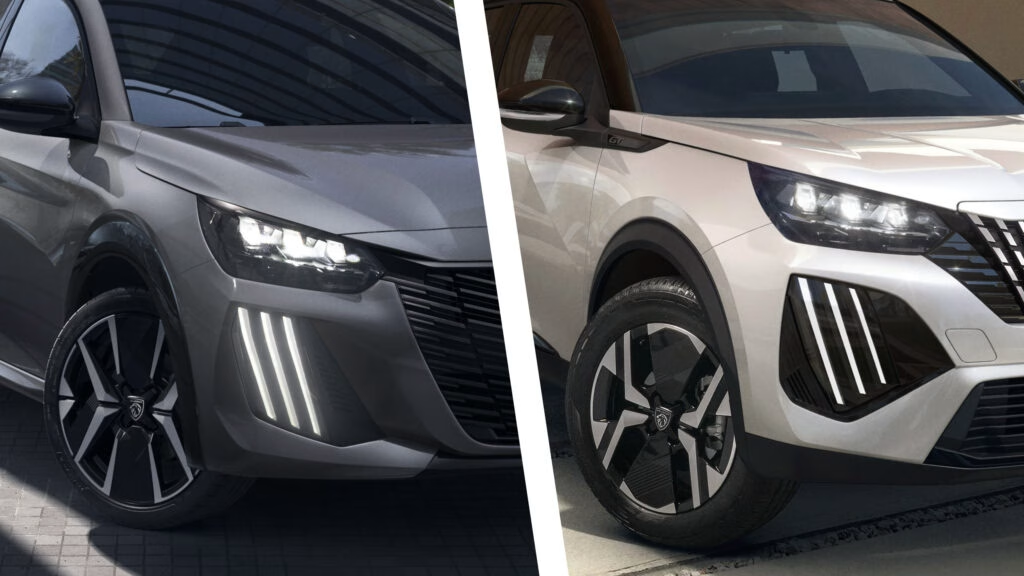What’s New with the Peugeot 208 GT and 2008 GT in Brazil?
Peugeot is shaking things up in Brazil with the launch of the updated 208 GT and 2008 GT, and there’s more going on than just a fresh coat of paint. The real story? Both models now come equipped with a clever Bio-Hybrid powertrain, a move that’s as much about smart engineering as it is about meeting the unique needs of Brazilian drivers.
Why Did Peugeot Choose a Fiat-Sourced Hybrid Engine?
Let’s be honest: carmakers rarely reinvent the wheel if they don’t have to. Stellantis, the parent company of both Peugeot and Fiat, has a treasure trove of parts and tech to share across its brands. For the Brazilian market, Peugeot tapped into this resourcefulness, opting for Fiat’s T200 turbocharged 1.0-liter flex-fuel engine paired with a 12V mild-hybrid system. This isn’t just badge engineering—it’s a strategic response to Brazil’s demand for flex-fuel vehicles, which can run on both gasoline and ethanol. That’s a big deal in a country where ethanol is widely available and often more affordable.
How Does the Bio-Hybrid Powertrain Actually Work?
Here’s where things get interesting. The heart of the new GT models is a compact, turbocharged three-cylinder engine, working in tandem with an electric motor-generator and a 12V lithium-ion battery. The setup delivers a punchy 128 horsepower and 200 Nm of torque—plenty for city driving and the occasional highway sprint. Power goes to the front wheels through a CVT automatic, which keeps things smooth and efficient.
But the real magic is in the mild-hybrid system. It doesn’t turn the car into a full EV, but it does help with start-stop functionality, regenerative braking, and a little extra boost when you need it. Stellantis claims this tech cuts fuel consumption by 10% and lowers CO2 emissions by 8% in urban driving. That’s not just marketing fluff—independent studies on mild-hybrid systems have shown similar gains, especially in stop-and-go traffic.
What Makes the Brazilian GT Models Different from Their European Cousins?
If you’re familiar with the Peugeot 208 or 2008 in Europe, you might be scratching your head. Over there, these cars use a 48V mild-hybrid 1.2-liter engine. So why the switch for Brazil? It comes down to local fuel preferences and emissions regulations. The flex-fuel capability is a must-have in South America, and the 12V system is better suited to the region’s infrastructure and driving habits.
Visually, the Brazilian GT trims get a few exclusive touches: the 208 GT sports a larger rear spoiler and gloss black mirrors, while the 2008 GT comes standard with a bi-tone finish and panoramic sunroof. Both roll on sharp-looking 17-inch diamond-cut alloys and wear GT badges with pride. There’s even a “Hybrid Turbo 200” badge on the tailgate—a not-so-subtle nod to what’s under the hood.
Are the Interiors and Tech Features Up to Scratch?
Step inside, and you’ll find that Peugeot hasn’t skimped on the details. The GT variants get a leather-wrapped steering wheel with contrast stitching, aluminum sport pedals, and carbon-style trim. The tech is equally impressive: a 10-inch digital instrument cluster with 3D graphics (including hybrid system info), a 10.3-inch infotainment display, and a full suite of advanced driver assistance systems (ADAS). It’s a cabin that feels modern, sporty, and just a little bit premium—exactly what buyers in this segment are looking for.
How Do These Models Stack Up on Price and Value?
Here’s where things get real. The Peugeot 208 GT starts at R$126,990 (about $23,400), while the 2008 GT comes in at R$162,990 (roughly $30,100). That puts them squarely in the competitive subcompact and compact SUV segments, going head-to-head with local favorites like the Fiat Pulse and Fastback (which, not coincidentally, use the same hybrid setup).
For buyers, the appeal is clear: you’re getting a stylish, well-equipped car with the latest hybrid tech, all tailored to Brazilian roads and fuels. And with the promise of lower running costs and emissions, there’s a strong case for choosing one of these GTs over a traditional gasoline-only model.
Will We See These Bio-Hybrid Peugeots Outside South America?
Don’t hold your breath. The flex-fuel, mild-hybrid combo is very much a response to South American market demands. In Europe and other regions, Peugeot will likely stick with their existing hybrid and electric offerings. Still, the Brazilian models are a fascinating example of how global carmakers adapt to local needs—sometimes with solutions you won’t find anywhere else.
What’s the Real-World Impact of Mild-Hybrid Tech in Brazil?
It’s easy to get lost in the specs, but the bigger picture is about accessibility and sustainability. Brazil’s push for ethanol as a renewable fuel source has shaped its automotive landscape for decades. By combining flex-fuel engines with mild-hybrid systems, Peugeot is doubling down on efficiency without asking drivers to change their habits or infrastructure. It’s a pragmatic approach—one that could serve as a blueprint for other emerging markets looking to balance environmental goals with everyday practicality.
The big takeaway? Peugeot’s new GT hybrids aren’t about perfection—they’re about smarter adjustments for real-world needs. Start with one change this week—maybe it’s considering a more efficient car, or just paying closer attention to your fuel mix—and you’ll likely spot the difference by month’s end.

